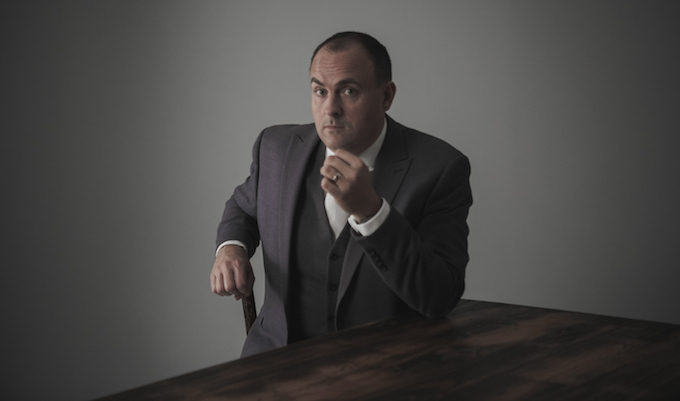TATOC 2017 Conference round-up: Part 1
In the first of a series of reports on the 2017 TATOC conference, LEIGH CONNELLY looks back at some of the highlights of the leading industry event.
This year’s event was held from 3-5 March at the Park Royal Hotel Warrington and was well attended by representatives of TATOC member resorts, industry professionals and resort committee members.
This annual event is the only one of its kind, bringing industry professionals together with timeshare owners and resort committee members, bridging the gap and facilitating important discussion.
The conference was opened by Robin Mills, RDO Communications, Chairman of Club Leisure Group, and for this weekend, as in previous years, a capable and knowledgeable conference moderator.
Before the sessions began, delegates heard briefly from the Chairman of TATOC, Harry Taylor. Taylor is highly regarded within the timeshare community, for his dedication to the industry, to the timeshare product, and to making sure everyone is playing fair. Throughout the conference, this dedication was noted by various speakers, particularly Howard Nusbaum, CEO of ARDA, who presented TATOC with a check for £30,000, a generous donation made in recognition and gratitude of TATOC’s ongoing support to ARDA.

Geoff Ramm
A Motivational Morning with Geoff Ramm
Each year the conference is kicked off with a motivational speaker, setting the tone for a weekend of positivity and creative solutions. This year was no different.
Delegates were treated to a motivational presentation and interactive session with Geoff Ramm, Customer Service and Marketing Speaker, and creator of OMG Marketing and Celebrity Service.
Geoff began by saying that every business should be aiming to create memorable experiences for its customers, which hopefully they will then share with the wider public – other potential customers. He added that this is nothing new or unusual and that most businesses claim this to be their top priority. “But why, then, is there so much non-experience?” he asked.
Ramm went on to say that he is constantly hearing cries of “retail is dead” and “Amazon is killing us.” But, he suggested, this is a convenient excuse to make when so often businesses are not doing all they could to retain their customers.
Don’t self-sabotage
Ramm highlighted recent examples of bad customer experiences which he had personally endured. He had been wandering a shopping centre at Christmastime last year, when he saw a Santa’s grotto. “The queue was a mile long,” he explained. But when he and his young son reached the front of the queue, they were greeted by a small sign which read: ‘NO photography. Parents will have one chance to take a photograph, no retakes will be allowed’. How very festive indeed.
This is an experience which cannot be recreated online, one which has potential to create so many happy memories for children and families to share. People were willing to queue for a long time and pay good money for this experience, and yet, this curmudgeonly note threatened to undermine it entirely.
A further example, was an image of three air hostesses in the uniform of a widely-recognised airline, sat outside an airport, smoking cigarettes directly under a no-smoking sign. Ramm had photographed this as well as the note at the grotto, and while he does so for work purposes, it’s likely that these things are noticed by regular customers. His point? “Look at yourselves, before your competitors. Ask yourself, who is talking about the experience you are providing right now? What are they saying?”
Create excitement
Thankfully, there were some examples of brands creating fantastic customer experiences, often with small, yet meaningful acts of customer service:
- The first was a Premier Inn, which hid toy ducks in rooms where there were children staying, along with a note congratulating the child on finding Donald and Daffy Duck and asking them to visit reception to claim their treat, a bag of sweets.
- The second example was when Ramm took his son on a train for the first time. The child was under the age bracket for requiring a ticket and could travel for free. However, the ticket attendant recognised the excitement that a young child might feel, so she asked his name and wrote ‘Elliot’s magic ticket’ on a plain ticket.
Ramm highlighted the value of creating excitement and advised delegates that they should all be getting personal to create a memorable experience.
Alter your viewpoint
Delegates were then asked to complete a task with those sat on their tables. They were given the below, and asked to find a creative solution.
- You open a café at a well-known beauty spot in the countryside, selling coffee, tea and homemade produce. There is only one carpark near to the beauty spot, which is right next to your café. Visitors must pay for car parking, and are often faced with the dilemma of not having any change. Seeing an opportunity to promote your café as a place where visitors could get some change and, hopefully, stay for refreshments, you decide to put a note on the parking meter – what does it say?
Delegates were given two minutes to think about what to say, and came up with all sorts of notes, varying from simply, ‘Change available at the café’ to short rhymes, and even an offer to refund parking fees if purchases are made at the café.
When Ramm revealed that this was a real-life scenario and shared the real note, delegates were surprised. It read: ‘Please do not ask for change at the café bar, we have none left!!’
Ramm highlighted that when we are placed in this kind of environment, with ideas bouncing around, we can come up with many creative ideas in a short time, and in fact the best ideas usually come within the first few minutes. But it is all about how we view things. Do we see opportunity to enhance the customer experience? Or do we find reason to limit customers, spoiling the experience entirely.
Always respond
No one wants to be ignored when making a complaint or query, It’s infuriating, especially in this day and age, when is has never been easier to connect.
But Ramm wanted to highlight the importance of response, even when no question, or complaint is being made. This is particularly relevant on Twitter. When people are engaging with your brand in any way, you should be making the effort to engage back. If you don’t, why would they bother tagging, or mentioning you again? It’s easy to reply, retweet or favourite a Tweet and not doing so shows a distinct lack of interest in your customer.
Don’t forget to say “Thank you”
“When someone has given you their money for your product or service – you should be thanking them,” Ramm said. He went on to explain that he has reinvested money each year in saying “thank you” to clients at Christmas, since starting his business 15 years ago. “In the beginning, people would call me when they had received their gifts, I would be in the forefront of their minds and they would book me again. These days they will take photos of their gifts and Tweet them.”
Ramm asked delegates: “What is on your customers’ desks to remind them of you?” But, equally, he urged against giving useless things that people don’t want. “If you are going to spend the money then spend it on something worthwhile.”
He gave an example of when he was looking to book a conference venue many years back. He looked at three different venues, not actually booking any of them. Only one company kept in touch with him via their marketing – and at Christmas, they sent him a calendar. At first he thought, “of all the stuff you could give away, why another calendar, what a waste of money. But,” he said, “When I flicked through the pages, I found each month was personalised with my name. They took a simple concept and made it all about me, rather than them. And yes, it would have cost them more money, but it sat on my desk rather than in the bin. Sometimes you have to spend money.”
Know when to be quiet
Ramm finished by discussing what he feels to be a major flaw in many companies’ marketing strategies – over marketing.
“Many companies are sending out monthly newsletters, with their only goal being consistent contact. They are literally sitting down to work out how to fill the space. But the issue is, everyone is doing the same, clogging up their customers’ inboxes, and no one is reading all of this content. But, what’s worse is when you do have something to say, it’s ignored, or it’s relegated to the spam folder.”
Ramm’s opening session got the event off to a high-energy start and was an excellent beginning to what proved to be an insightful and useful few days.




